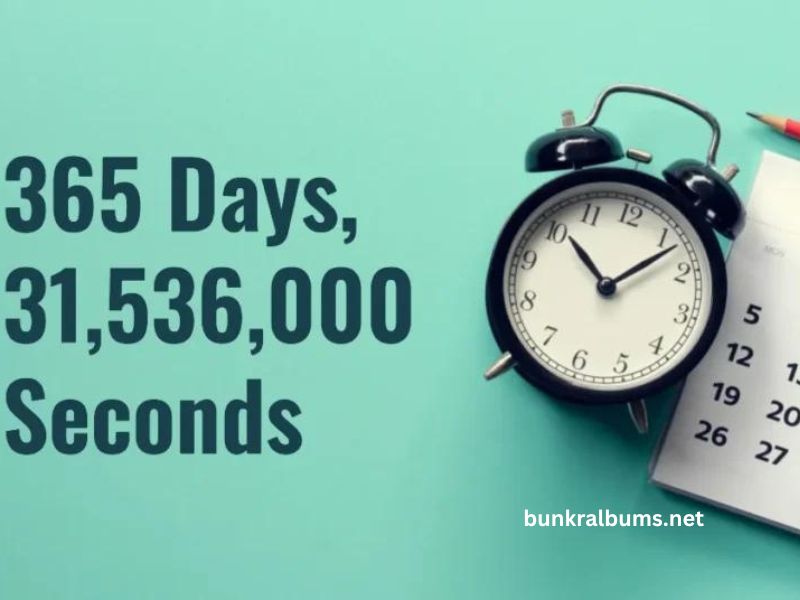When it comes to measuring time, the concept of a year is fundamental. It represents the period it takes for the Earth to complete one orbit around the Sun, roughly corresponding to the length of seasons. But have you ever wondered just how many seconds are contained in a year? In this article, we will break down the calculations and delve into the nuances of timekeeping, exploring different types of years and their implications.
The Basic Calculation
At its most straightforward, calculating the number of seconds in a year involves simple multiplication. Here’s how it breaks down:
- Seconds in a Minute: There are 60 seconds in a minute.
- Minutes in an Hour: There are 60 minutes in an hour.
- Hours in a Day: There are 24 hours in a day.
- Days in a Year: The number of days in a year can vary depending on whether it’s a leap year or a common year.
Common Year Calculation
A common year consists of 365 days. Therefore, the calculation for the number of seconds in a common year is:
Seconds in a year=60 seconds×60 minutes×24 hours×365 days\text{Seconds in a year} = 60 \text{ seconds} \times 60 \text{ minutes} \times 24 \text{ hours} \times 365 \text{ days}
Breaking it down:
- 60 seconds/minute × 60 minutes/hour = 3600 seconds/hour
- 3600 seconds/hour × 24 hours/day = 86,400 seconds/day
- 86,400 seconds/day × 365 days/year = 31,536,000 seconds/year
Thus, there are 31,536,000 seconds in a common year.
Leap Year Calculation
Leap years occur every four years to help synchronize the calendar year with the astronomical year. A leap year has 366 days, which adds an additional day—February 29. The calculation for the number of seconds in a leap year is:
Seconds in a leap year=60×60×24×366\text{Seconds in a leap year} = 60 \times 60 \times 24 \times 366
Calculating this gives us:
- 60 seconds/minute × 60 minutes/hour = 3600 seconds/hour
- 3600 seconds/hour × 24 hours/day = 86,400 seconds/day
- 86,400 seconds/day × 366 days/year = 31,622,400 seconds/year
So, there are 31,622,400 seconds in a leap year.
The Mean Year
While we often think of a year as either 365 or 366 days, astronomically, the average length of a year is referred to as the “mean year.” This average accounts for the leap years and can be calculated over a longer period.
In the Gregorian calendar, which we currently use, a year averages about 365.2425 days due to the leap year system. To calculate the number of seconds in a mean year, we can use this average:
Seconds in a mean year=60×60×24×365.2425\text{Seconds in a mean year} = 60 \times 60 \times 24 \times 365.2425
Calculating this yields:
- 60 seconds/minute × 60 minutes/hour = 3600 seconds/hour
- 3600 seconds/hour × 24 hours/day = 86,400 seconds/day
- 86,400 seconds/day × 365.2425 days/year ≈ 31,557,600 seconds/year
Thus, the mean year has approximately 31,557,600 seconds.
The Astronomical Year
The concept of a year can also be examined through an astronomical lens, particularly the sidereal year and the tropical year.
- Sidereal Year: This is the time it takes for the Earth to complete one orbit around the Sun relative to the fixed stars, approximately 365.256 days. In seconds, this amounts to about 31,558,149 seconds.
- Tropical Year: This is the time it takes for the Earth to complete one orbit around the Sun as measured from the vernal equinox, which is about 365.2422 days. This equates to approximately 31,556,952 seconds.
These variations in the definition of a year illustrate the complexity of time measurement in relation to Earth’s movement in space.
Implications of Time Measurement
Understanding how many seconds are in a year has significant implications across various fields:
Astronomy
In astronomy, the precision of time measurements is crucial for navigation, satellite positioning, and understanding celestial events. Knowing the exact number of seconds in different types of years helps astronomers make accurate predictions about planetary movements and positions.
Physics
In physics, particularly in fields like relativity, the perception of time can vary based on gravitational fields and velocities. The understanding of a year can influence calculations in time dilation and other phenomena.
Everyday Life
For the average person, knowing how many seconds are in a year can also provide a different perspective on time management. With 31,536,000 seconds in a year, it serves as a reminder of how we spend our time and the importance of prioritizing activities that matter most.
Health and Well-being
Many people track their time in terms of years to measure personal growth, health, and accomplishments. Understanding time in seconds can highlight how precious each moment is, encouraging mindfulness and presence in daily activities.
Conclusion
In summary, the number of seconds in a year varies depending on whether it’s a common year (31,536,000 seconds), a leap year (31,622,400 seconds), or an average mean year (approximately 31,557,600 seconds). Each measurement serves distinct purposes, whether for astronomical calculations or for personal reflections on time.
As we continue to navigate our busy lives, considering how many seconds we have in a year can inspire us to make the most of each fleeting moment. Time is indeed a valuable resource, and understanding its structure can lead to a deeper appreciation for the experiences and opportunities that come our way.



